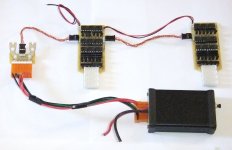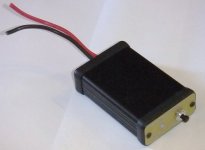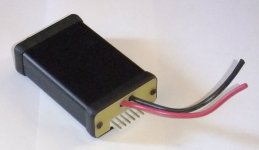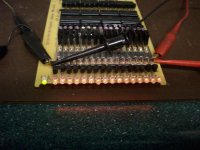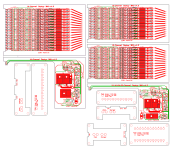Sorry for the delays.

I agree, we need a better way to get to the latest info. I will either edit the first post, or we'll start a new thread for the new version.
What is different about this new version, which we will call v4.5, is that it has a new/simpler control scheme for determining end-of-charge, and that we are now using resistor arrays and quad opto chips which cuts the assembly/build time down
significantly. It used to take me several hours to bend the leads, install, solder and trim the leads for the hundreds of resistors on a typical 24-channel board. Now, using the resistor arrays, that time is cut down to about 20 minutes.

Here's what a partially assembled board looks like:

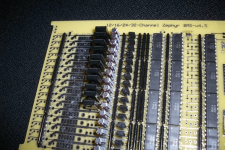
There are two main differences between this Zephyr BMS design and the typical Ping/Signalab-type boards. The latter typically only have bypass currents of 50-75mA, which means it literally can take over 24 hours to balance a reasonably imbalanced pack. The Zephyr shunt circuits can pass about 600mA, or about 10 times as much bypass current. Even the new Zephyr "Lite" BMS variants, which we are also working on, primarily for embedded LiPo setups, can pass about 160mA of shunt current.
The second major difference between the Signalab, et al, and Zephyr designs is the way charge control is handled. In the typical designs, the HVC trip point is set pretty high, like around 3.70-3.80V for LiFePO4. As soon as a cell voltage hits this point, the charge current is cutoff and the shunt circuits then bleed current off until the high cells are back down until the cell voltage is below the turnon point for the shunt circuit, typically around 3.60-3.65V. At only 56-75mA, this can take hours. This is not the most efficient way to do this, but it will eventually work, as long as all the cell voltages are above the shunt turnon point once the charge current is cutoff. For healthy cells, that start out reasonably balanced, this works okay, but like I said, can take awhile. If, however, you have a weaker cell, with slightly less capacity, or some that for whatever reason are significantly out-of-balance in relation to the rest, you can end up where cells get full faster. When that happens, the voltages for those fuller cells will rise sooner than the rest, and will trip the HVC line too soon. Now you have a case where the bulk of the cells haven't reached the shunt bypass turnon point, so only the fuller cell shunt circuits will come on. This will bring the high cells down closer to the rest, but it does nothing to balance the rest of the cells. What needs to happen is that the whole charge cycle needs to be repeated until all the cell voltages will at least be above the shunt turnon point when the high cell trips the HVC line.
The new Zephyr control scheme works differently. There are actually two separate HVC lines, one set a bit higher than the first one. The higher, second HVC signal is used as a "failsafe" control, to catch those cases like the one described above, where a weak, or severely imbalanced cell gets full way before the rest of the cells. We don't want this errant cell to get into an unchecked voltage rise condition, so whenever this line gets tripped, the charge current will be turned off briefly, for about 1 second. During the off cycle, the shunt circuit will pull the cell voltage back down closer to the rest, and then the charge current is turned back on. This cycling will repeat until the rest of the cell voltages catch up to the point that the shunt circuits themselves can keep the high cells in check. With 500-600mA of shunt current, it takes a pretty out-of-whack cell to trip this "failsafe" HVC signal. Under normal conditions, with normal imbalances, this HVC cycling condition shouldn't occur. When it does, it is a good indication that something is amiss.
The other HVC signal is tripped for each cell circuit when its shunt is in full opration, which means this cell is full. The opto outputs for these HVC signals are connected in series, instead of in parallel, like with the "failsafe" HVC and the LVC lines, and then this series connected opto string is used to trip the end-of-charge cutoff logic. This is a much simpler, and more reliable way to do the cutoff logic. In the previous versions, we were measuring the charge current and waiting for it to drop down below some user-adjustable setting, and then cutting off the charge current. This scheme works, but each setup is different and we've seen numerous issues in various setups. The new scheme is pretty much "one-size-fits-all" and it doesn't require any user adjustments.
The Zephyr Lite variants are functionally equivalent, but with shunt currents low enough that the boards can be safely embedded with the LiPo packs. It has been my experience that LiPo-based setups stay much more closely balanced, under normal conditions, so less shunt current is fine. The charge control section is identical to what's on the full Zephyr board, but as shown in the example shown below, it is sized to fit in the smallest Hammond 1" x 2" x 3" extruded aluminum case:
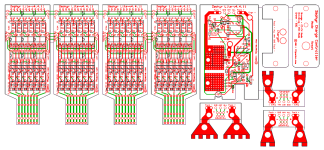
I'm not too sure on the pricing, for either the full Zephyr unit, or for the Lite variants, but the overall costs should be less than the previous versions. The board sizes are smaller and the total parts count is down quite a bit. For the full Zephyr boards, we will at a minimum offer the PCBs with a detailed set of instructions and a BOM file. We may, however, also offer pre-built and tested versions, once we get these going. I don't know how much extra this will be until we get an idea on how long it now takes to build one. Richard is working on this now. For at least the LiPo Lite version shown above, we will definitely offer these pre-built/tested, at an attractive price. More about this later (please don't send me a PM requesting prices and availability yet. :lol: ).
We will also be starting "For Sale" threads in the for sale forum section, for each of these, and like I said, I will either update the first post in this thread, or we'll start a new "info" thread, with all the appropriate data in the first post.
-- Gary





